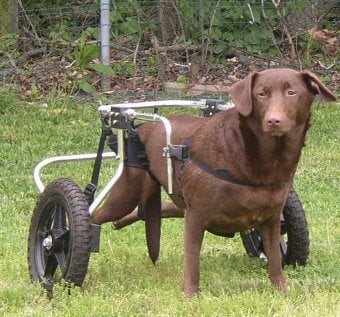Saying Good-bye to Pets with Dignity. It’s never easy to let go of a loved one, whether they have two legs or four. Pet owners often console themselves by saying they are “easing their pet’s misery” when they ask for euthanasia after diagnosis of a terminal illness. But, are these “premature euthanasia’s” good for the whole pet family? Ending a human life is not legal, so people with terminal illnesses and less than six months to live often enter hospice care. This relatively recent development in medicine focuses on the comfort of the patient and less on heroic medical or surgical measures. In other words, caregivers put the patient’s comfort first, not an attempt at any type of cure. Another important aspect of pet hospice care is that the whole family is included. Relatives and friends can say good-bye in peace rather than sitting in hospital lobbies or crowded waiting rooms.
Now, thanks to caring veterinarians, technicians and other support personnel, hospice care for pets is becoming a reality across the continent. Websites like www.pethospice.org and www.angelsgate.org introduce concerned pet owners to the concept of caring for a terminally ill or disabled pet.
Pets due to their shorter lifespan and leave us all too quickly. And, the availability of an “easy death” through euthanasia has potentially robbed some owners of quality time with their beloved dogs or cats. Veterinary hospice care aims to provide a higher quality of life for those pets, even if the time frame is only a few days to a few weeks.
Just like in human hospice, veterinarians feel that the final days for the pet should be spent in comfort among familiar surroundings and loving family. According to Dr. Alice Villalobos, director of Pawspice in California, the goal of pet hospice is help pet owners determine the quality of life for their pets. “If the pet owners and veterinary staff can meet the basic desires at a satisfactory level,” says Villalobos, “there is justification for preserving the lives of the pets.” At Pawspice, the five “H’s” of hunger, hurt, happiness, hydration and hygiene, along with the pet’s mobility are rated each day. Of course, the goal is that the pet is having more good days than bad ones.
Through judicious use of pain-relieving medications and comfort techniques, veterinarians help pet owners bring ease to pets struggling at the end of their lives. Many veterinarians will teach owners how to administer a variety of medications as well as how to clean wounds or control minor bleeding. For their part, the veterinary staff often holds themselves ready at all hours to help when pets tells owners “it’s time”.
According to www.specialneedspet.org, owners should try to plan ahead, especially if they care for a disabled pet or a pet recently diagnosed with a terminal illness. Most importantly, the involvement of the family veterinarian is crucial in providing the appropriate palliative care.
Some owners find comfort in providing various amenities to their pets. Heated pet beds, mobility aids and even special harnesses designed to aid the pet in getting up from lying down are all available to aid the pet owner during this stressful time.
Finally, pet owners should consider developing a support system to help them when the task of caring for the pet becomes an emotional or physical challenge. Grief counselors, relatives, and even good friends can help provide strength at critical times.
No one wants to see their pets suffer, but the diagnosis of cancer or the onset of a debilitating injury does not automatically mean instant euthanasia. Vets are trying to making these situations more comfortable for pets and owners alike. Ask your veterinarian about hospice care options in your area or visit www.pethospice.org for additional information.
